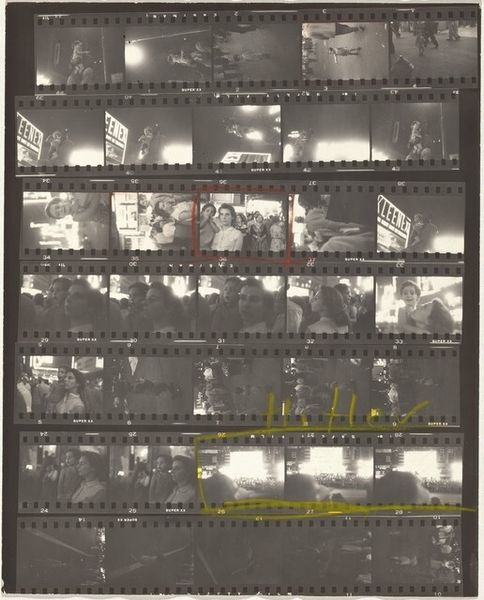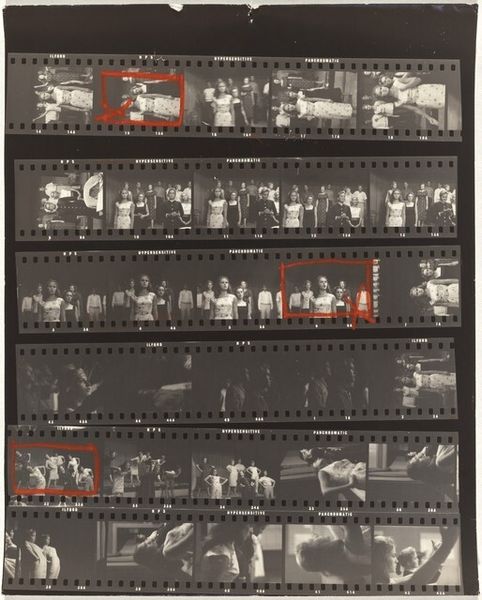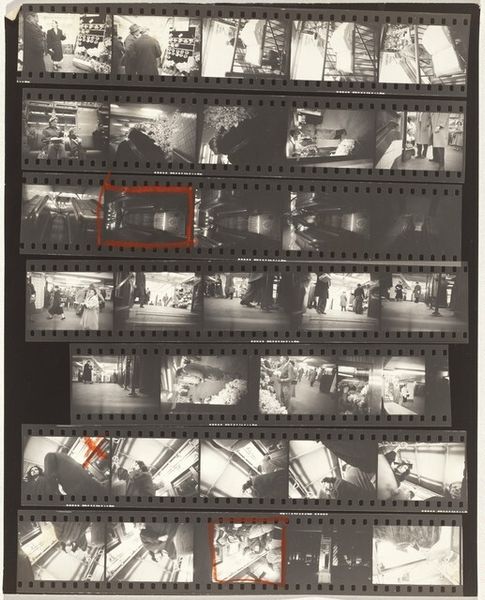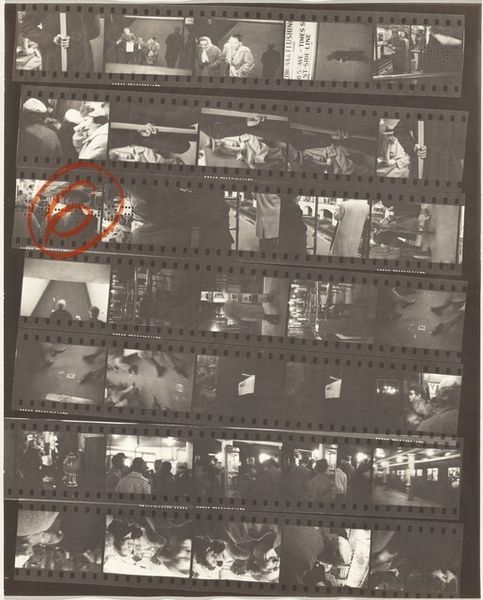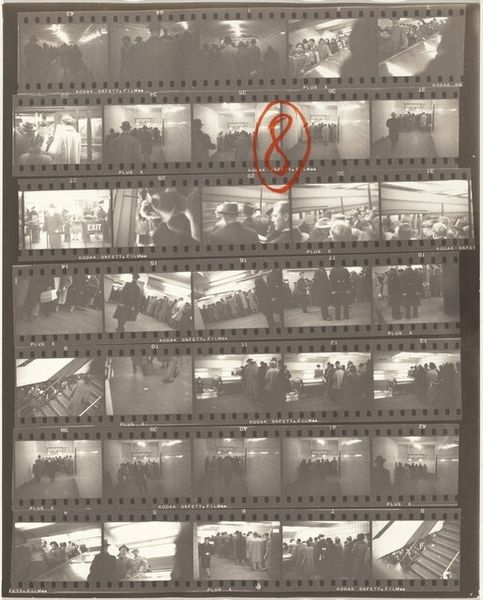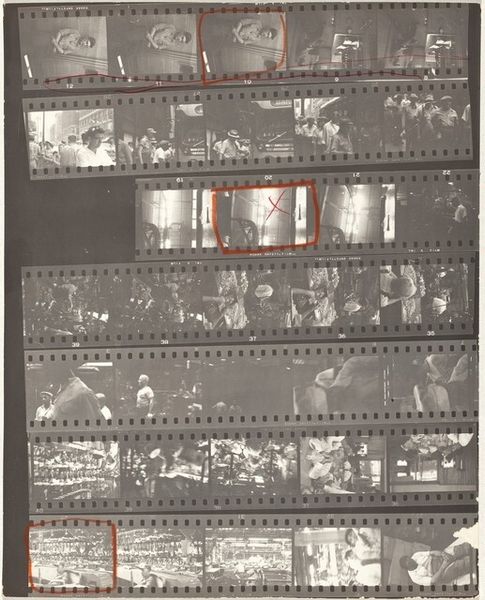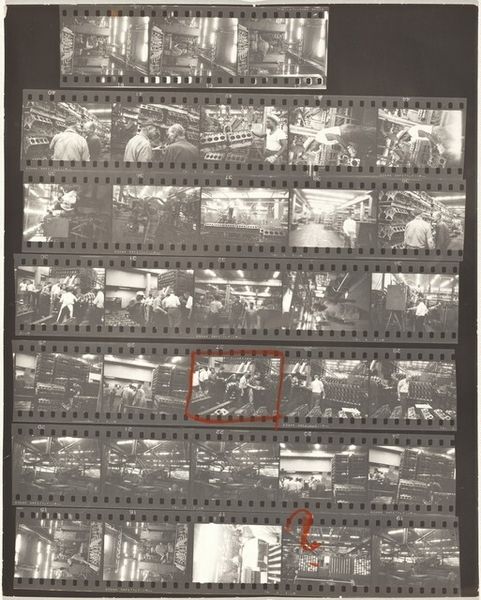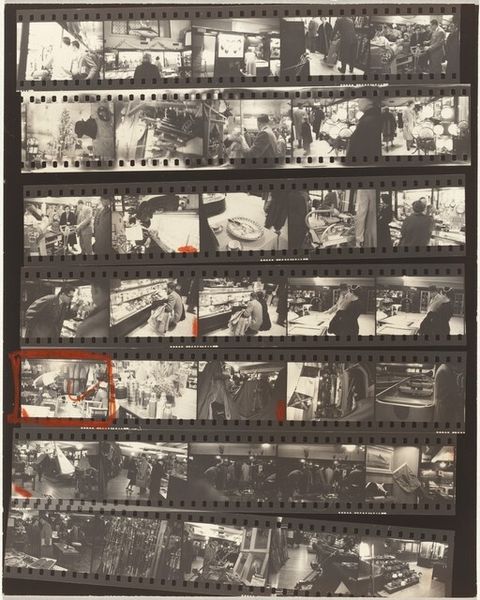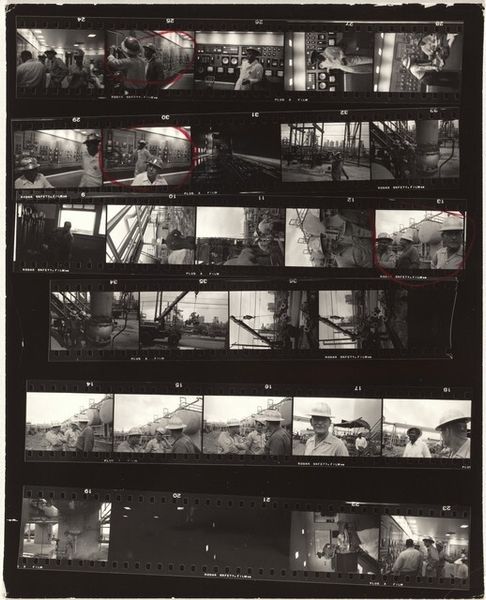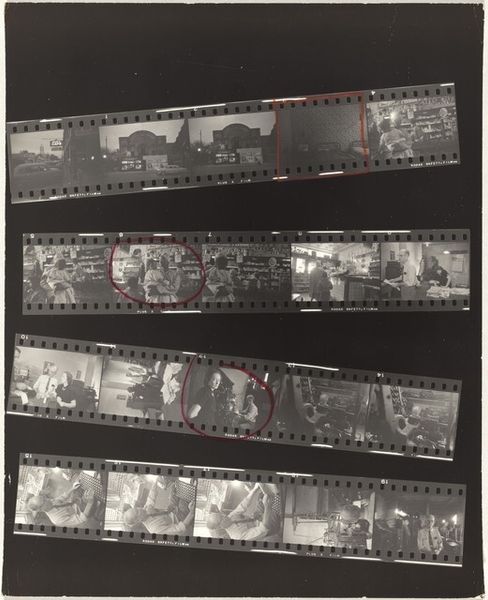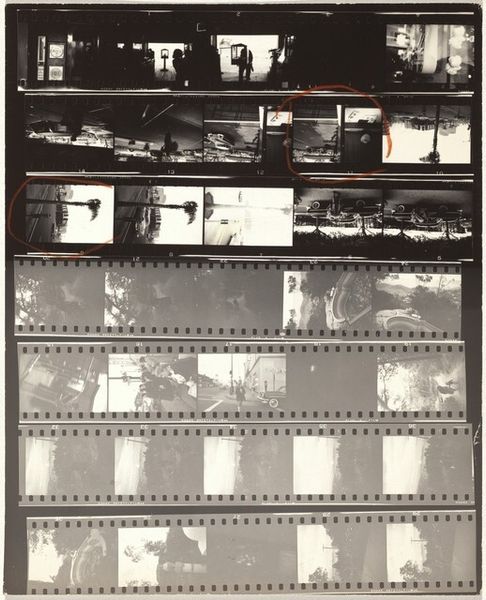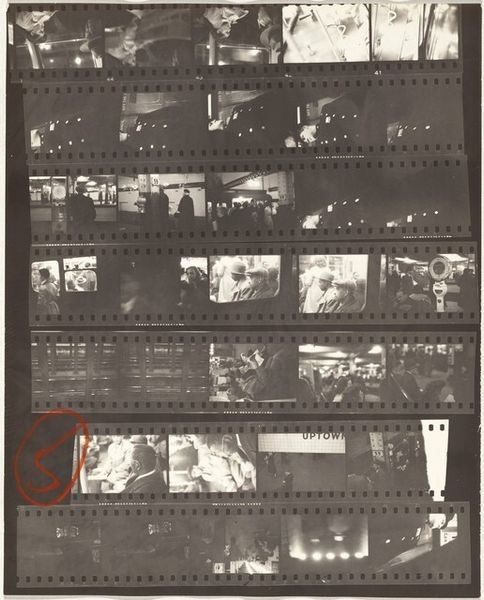
contact-print, photography
#
landscape
#
contact-print
#
street-photography
#
photography
#
cityscape
#
modernism
Dimensions: overall: 25.2 x 20.2 cm (9 15/16 x 7 15/16 in.)
Copyright: National Gallery of Art: CC0 1.0
Curator: Robert Frank's "Guggenheim 135--New York City," a contact print from 1955, gives us an intimate glimpse into his photographic process. What's your initial take on it? Editor: My first impression is one of layered transparency, of both the physical film and the urban space. There's a vulnerability in seeing the artist's working process so laid bare; it really draws you in, makes you feel almost like you're peering into Frank's mind as he made his selection. Curator: Absolutely, and the presence of New York City itself is quite significant here, specifically what we understand is midtown, across from the Guggenheim. Street photography at the time began influencing sociological understandings of public and urban spaces. Editor: And that sociological element, looking closely, makes me question how much control the artist has—or wants—over representation. We are seeing how he captures daily life within the spectacle of a metropolis, and considering race, class, gender at that time in history it shows how much inequity Frank could include or omit. Curator: Right, because Frank wasn't just capturing a pretty picture. There’s a palpable tension, and to read the artist's selection with the pen marks opens even further interpretations as to what made the “cut”. His gaze as a Swiss immigrant offered an outsider's perspective that challenged the idealized images of America that were prevalent at the time. Editor: Frank, in many ways, created more questions than answers about the so-called American Dream, laying bare anxieties beneath the surface, revealing those silences and hidden voices within that rapid post-war context. The contact print's almost raw state becomes part of the message, this rough, uncut version that challenges any airbrushed version of city life. Curator: Well put. Thinking of his project as a whole, understanding how Frank operated within institutions, it is interesting how his visual narratives acted in subversion to certain establishments of the day, and it definitely made him both famous and somewhat of a controversial figure. Editor: It's that dance that still echoes today, doesn't it? How artists negotiate representation, the social impact of their work, and the institutions that ultimately frame them. This particular contact print is far more than just a preliminary version to his iconic images; it stands as a powerful document of both artistic process and urban realities of the time.
Comments
No comments
Be the first to comment and join the conversation on the ultimate creative platform.
